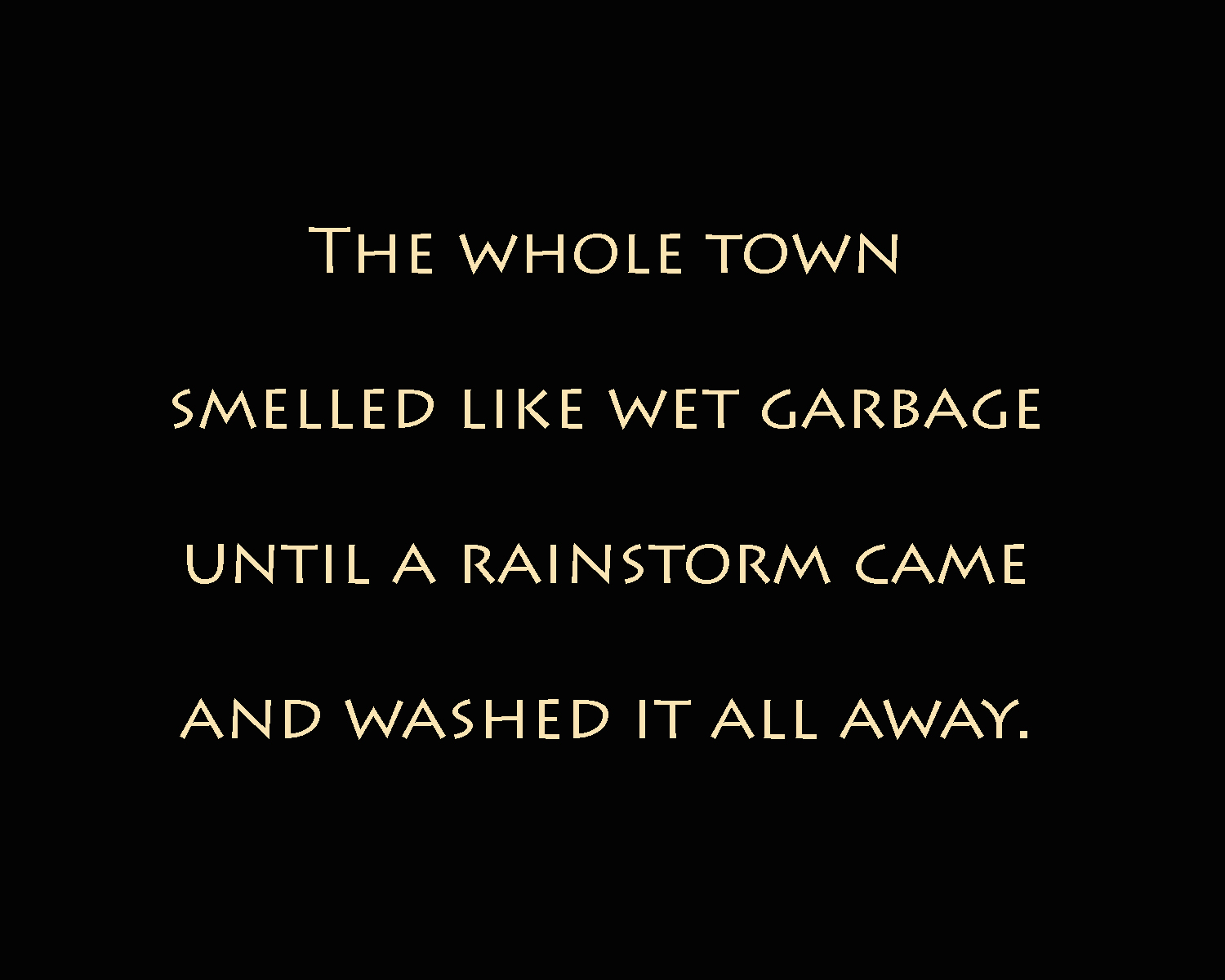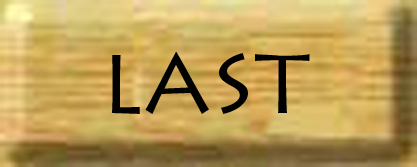
The Battle of Halloween
On most of my adventures, no playground equipment was demolished.
Carpinteria Avenue follows the old route of Highway 101 through town. Paralleling Carp Ave about a mile to the north was Highway 150, now renumbered 192. Carpinteria High School, now the Middle School, sits where Casitas Pass Road dead-ends into Carp Ave. That area which is now shopping centers was filled with lemon groves in the late 1950's. The new freeway in 1954 began to change things; subdivisions had replaced former fields of Lima beans.
One of the joys of being a free range Carpinteria kid in that era, was that almost anybody could get the use of the family car on a regular basis, or for a few bucks buy an old junker for himself. Having a car constantly in need of repair was its own education in auto mechanics, and we all knew how to rebuild a carburetor, for instance, or gap the sparkplugs, or replace the points or adjust the timing by ear, turning the distributor.
I remember being schooled in flat track racing technique by my friend Bill Sylvester. Following a weekday after-school club meeting, we were inside the school grounds with Bill's little Volvo, and he took about 4 of us for a few laps on the quarter mile track around the football field. It was a standard track and field smoothly graded dirt circuit, not a lot different from the Thunderbowl's racing oval. Taking a curve at a speed that pushes the car's cornering limits, the rear wheels start to slide and you can get control by keeping up the speed and turning your front wheels counter-intuitively to the same direction you are skidding, opposite the curve you are rounding. It was a revelation.
Another feature of our Santa Barbara County playground was the network of dirt roads leading up to Camino Cielo, which runs from above Carpinteria West for about 30 miles along the ridge of the Santa Ynez Mountains. This gave us plenty of opportunities to develop our drifting skills.
If you started at the high school and drove up to Highway 150 and turned right, in a few hundred feet you reached a line across the road that was the beginning of our measured quarter of a mile. Most of the time it wasn't used for drag racing, just a place your car to test out your latest tune up or attempt to soup it up. It was not a good idea to do it in the opposite direction because if you did, you would reach your maximum speed just as you crossed the T intersection where 150 takes a little jog to the left. One of my classmates piled into the lemon orchard right past the corner and totaled his car doing just that thing.
I never had a mishap at the quarter mile, I found more enjoyment on the winding foothill roads from Casitas pass through Summerland and Montecito and beyond. One day my friend Ronnie Brower invited me to take his nearly new souped-up rear engine Chevrolet Corvair for a spin, so I did. He sat in the passenger seat while I took the familiar curves of Highway 150 heading toward Santa Barbara.
Of course we had no seat belts, nobody did. On a curve in the road, I felt the rear end start to drift, something I could have easily compensated for in a front engine car, but this oddly balanced bolo of a car went into a flat spin across the two lane road into the grass at the other side and slid to a stop. It turns out this car became notorious for this kind of handling problem; too much weight in the back, and not enough weight on the front wheels. There was no damage done except for the grass on the wheels and hubcaps in the direction we slid. Nobody hurt. I was just embarrassed. It was years later when I saw Ronnie Brower at our 50th High School reunion. The first thing he said to me was "Dude, it wasn't your fault," and I knew exactly what he was talking about.
Whenever there was a car crash in this part of the county, the sometimes-grisly wreckage brought to Colson's Garage, one block from the Walnut Ave house. It was a reminder of the high stakes of our pastimes, but we were young.
Carpinteria was a peaceful town, where most of the violence took place on the football field.
In the late 1950's, however, there was an annual mass hysteria in which both roving bands and lone wolfs would indiscriminately attack the citizenry in a free-for-all.
Along the north side of Foothill Road there were hundreds of acres planted in tomatoes, and as they ripened in the late fall, migrant workers were brought in to do the picking. They had an enormous amount of wooden tomato crates, and to be on the safe side and to risk not having enough, they brought in more than they needed. Well, as every Carpinterian from this era knows, the tomatoes that are picked and trucked off to the supermarkets of Southern California are mostly green, timing them to ripen by the time they reached the store shelves. These facts left acres of ripe tomatoes and sturdy boxes lying in the fields.
There was a Shell Gas Station on the corner of Linden and Carp Ave, and a Standard station on the other corner. In the days leading up to Halloween, the gas station owners would collect enough tomato crates to erect barricades facing each other across the street and begin to stock their battlements with lots of juicy red tomatoes. That was the scene of most of the pitched battles, but across the town everyone and anyone was fair game. If it was a weekday, it didn't start until after school, but in any year, by dusk, the tomatoes were flying everywhere. The nicer the car, the more satisfying was the attack. Patrol cars were enthusiastically targeted.
Small groups piled into the back of pickups, the preferred assault vehicle, and left no street unsplattered. In the morning people washed off their cars and sidewalks, the boxes were taken back to the fields. The town smelled like wet garbage for weeks, or until a rainstorm washed it all away.
Today in Carpinteria there is no tar pit dump on the bluffs, no pier, no Cerca Del Mar Pavilion, no Thunderbowl racetrack, no packinghouses along the tracks, no raft or swings or beach store at the Main Beach. People don't know where you mean when you say the boat landing. And if you throw a tomato at a police car on Halloween, you will probably be arrested. In the good old days, it was a nearly a citizen's duty to save your juiciest tomato for a sheriff's car and the deputies would drive by slowly to give you a better shot.





Copyright © 2022 John Oliver
All Rights Reserved
mail@unclejohnsweb.com

Carpinteria Avenue follows the old route of Highway 101 through town. Paralleling Carp Ave about a mile to the north was Highway 150, now renumbered 192. Carpinteria High School, now the Middle School, sits where Casitas Pass Road dead-ends into Carp Ave. That area which is now shopping centers was filled with lemon groves in the late 1950's. The new freeway in 1954 began to change things; subdivisions had replaced former fields of Lima beans.
One of the joys of being a free range Carpinteria kid in that era, was that almost anybody could get the use of the family car on a regular basis, or for a few bucks buy an old junker for himself. Having a car constantly in need of repair was its own education in auto mechanics, and we all knew how to rebuild a carburetor, for instance, or gap the sparkplugs, or replace the points or adjust the timing by ear, turning the distributor.
I remember being schooled in flat track racing technique by my friend Bill Sylvester. Following a weekday after-school club meeting, we were inside the school grounds with Bill's little Volvo, and he took about 4 of us for a few laps on the quarter mile track around the football field. It was a standard track and field smoothly graded dirt circuit, not a lot different from the Thunderbowl's racing oval. Taking a curve at a speed that pushes the car's cornering limits, the rear wheels start to slide and you can get control by keeping up the speed and turning your front wheels counter-intuitively to the same direction you are skidding, opposite the curve you are rounding. It was a revelation.
Another feature of our Santa Barbara County playground was the network of dirt roads leading up to Camino Cielo, which runs from above Carpinteria West for about 30 miles along the ridge of the Santa Ynez Mountains. This gave us plenty of opportunities to develop our drifting skills.
If you started at the high school and drove up to Highway 150 and turned right, in a few hundred feet you reached a line across the road that was the beginning of our measured quarter of a mile. Most of the time it wasn't used for drag racing, just a place your car to test out your latest tune up or attempt to soup it up. It was not a good idea to do it in the opposite direction because if you did, you would reach your maximum speed just as you crossed the T intersection where 150 takes a little jog to the left. One of my classmates piled into the lemon orchard right past the corner and totaled his car doing just that thing.
I never had a mishap at the quarter mile, I found more enjoyment on the winding foothill roads from Casitas pass through Summerland and Montecito and beyond. One day my friend Ronnie Brower invited me to take his nearly new souped-up rear engine Chevrolet Corvair for a spin, so I did. He sat in the passenger seat while I took the familiar curves of Highway 150 heading toward Santa Barbara.
Of course we had no seat belts, nobody did. On a curve in the road, I felt the rear end start to drift, something I could have easily compensated for in a front engine car, but this oddly balanced bolo of a car went into a flat spin across the two lane road into the grass at the other side and slid to a stop. It turns out this car became notorious for this kind of handling problem; too much weight in the back, and not enough weight on the front wheels. There was no damage done except for the grass on the wheels and hubcaps in the direction we slid. Nobody hurt. I was just embarrassed. It was years later when I saw Ronnie Brower at our 50th High School reunion. The first thing he said to me was "Dude, it wasn't your fault," and I knew exactly what he was talking about.
Whenever there was a car crash in this part of the county, the sometimes-grisly wreckage brought to Colson's Garage, one block from the Walnut Ave house. It was a reminder of the high stakes of our pastimes, but we were young.
Carpinteria was a peaceful town, where most of the violence took place on the football field. In the late 1950's, however, there was an annual mass hysteria in which both roving bands and lone wolfs would indiscriminately attack the citizenry in a free-for-all.
Along the north side of Foothill Road there were hundreds of acres planted in tomatoes, and as they ripened in the late fall, migrant workers were brought in to do the picking. They had an enormous amount of wooden tomato crates, and to be on the safe side and to risk not having enough, they brought in more than they needed. Well, as every Carpinterian from this era knows, the tomatoes that are picked and trucked off to the supermarkets of Southern California are mostly green, timing them to ripen by the time they reached the store shelves. These facts left acres of ripe tomatoes and sturdy boxes lying in the fields.
There was a Shell Gas Station on the corner of Linden and Carp Ave, and a Standard station on the other corner. In the days leading up to Halloween, the gas station owners would collect enough tomato crates to erect barricades facing each other across the street and begin to stock their battlements with lots of juicy red tomatoes. That was the scene of most of the pitched battles, but across the town everyone and anyone was fair game. If it was a weekday, it didn't start until after school, but in any year, by dusk, the tomatoes were flying everywhere. The nicer the car, the more satisfying was the attack. Patrol cars were enthusiastically targeted.
Small groups piled into the back of pickups, the preferred assault vehicle, and left no street unsplattered. In the morning people washed off their cars and sidewalks, the boxes were taken back to the fields. The town smelled like wet garbage for weeks, or until a rainstorm washed it all away.
Today in Carpinteria there is no tar pit dump on the bluffs, no pier, no Cerca Del Mar Pavilion, no Thunderbowl racetrack, no packinghouses along the tracks, no raft or swings or beach store at the Main Beach. People don't know where you mean when you say the boat landing. And if you throw a tomato at a police car on Halloween, you will probably be arrested. In the good old days, it was a nearly a citizen's duty to save your juiciest tomato for a sheriff's car and the deputies would drive by slowly to give you a better shot.





Copyright © 2022 John Oliver
All Rights Reserved
mail@unclejohnsweb.com

All Rights Reserved
mail@unclejohnsweb.com
